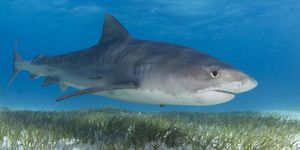James Webb Space Telescope is Undergoing Frigid Temperature Testing
The James Webb Space Telescope (JWST) is a major deal for astronomers because it should enable us to see deeper into the cosmos than any space telescope before it. JWST is mostly assembled and ready for space, but before we can send it there, stress tests are imperative to ensure it can withstand the frigid outer space environment.
Stress-testing the JWST on Earth is critical; if anything goes wrong, it’s much easier to repair right here on Earth’s surface than it would be to repair in outer space.
NASA placed the heart of the JWST inside the historic Chamber A located in Houston, Texas on July 10th. After closing the doors, the chamber spent over a week evacuating all the air inside to simulate a space-like vacuum. Since then, the temperatures have continued to drop.
Image Credit: NASA/JWST/CAM 2
Related: James Webb Space Telescope's massive primary mirror is fully assembled
The temperature is displayed in real-time on NASA’s James Webb Space Telescope Web Cam page. As of this writing, the internal temperature has reached nearly -300º Fahrenheit. That’s a polarizing difference from the near-90º temperatures outside in Houston during the day.
The JWST will stay sealed inside Chamber A for a few months while it commences the chilling stress test. The temperature inside will continue to drop over the next several days, eventually reaching the final goal of -424º Fahrenheit.
The operating temperature JWST needs to reach is -393º Fahrenheit, but the mid-infrared instrument (MIRI) needs to get colder, so a built-in cryocooler dips its temperature down even further to -447º Fahrenheit.
NASA says that reaching these cold temperatures is a critical step, as JWST’s scientific instruments are designed to work at these frigid temperatures. The cold temperatures make the equipment sensitive to infrared light sources that come from the depths of outer space. Without them, faint infrared signals wouldn’t be so effortlessly picked up.
Related: James Webb Space Telescope may be the key to studying the nearby Proxima b system
In case you haven’t seen what the JWST looks like just yet, the bottom end looks like a massive tin foil shield. This shield helps keep heat sources like the Sun from warming the instruments up and disrupting their operation while in outer space.
You can learn more about the historic Chamber A testing facility in the following video:
JWST is scheduled for a 2018 launch, after which it will succeed the Hubble Space Telescope as our eye into the cosmos. Fortunately for NASA, it appears to be meeting its deadlines. One can only hope that the testing it undergoes inside of Chamber A is successful, such that it doesn’t face any delays.
Source: NASA









